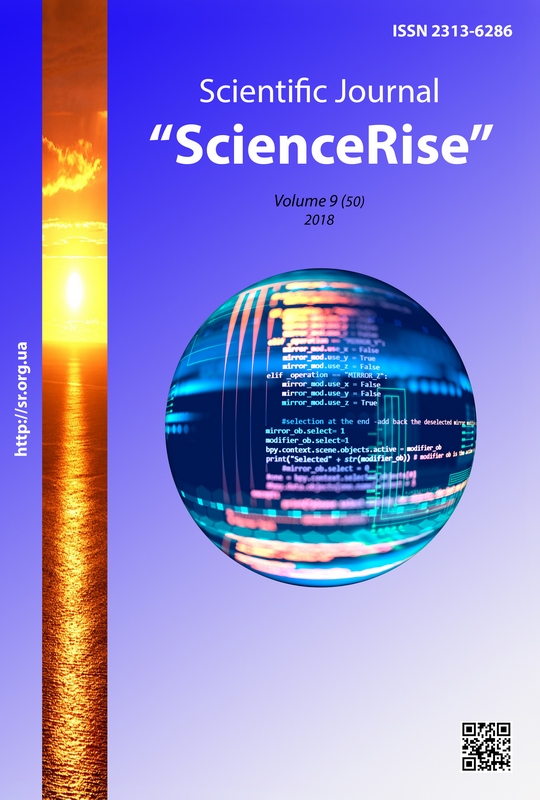Classification of volyn forests according to data of multispectral satellite images
DOI:
https://doi.org/10.15587/2313-8416.2018.143139Keywords:
remote sensing of the earth, space image, monitoring of forests, controlled classification, standardAbstract
The article deals with the issue of combining modern open geographic information systems and data from remote sensing of the Earth in the tasks of forest management. Classifiers have been developed based on the method of field uplift and the designation of landfills on the basis of existing plans for afforestation. Controlled classification of research objects is conducted and the accuracy of the results is evaluated. It is established that the accuracy of the determination of individual classes directly depends on the percentage of objects and errors of the end user in the process of their definition
References
Burshtynska, Kh. V., Stankevych, S. A. (2010). Aerokosmichni znimalni systemy [Aerospace shooting systems]. Lviv: Lviv Polytechnic Publishing House, 292.
Burshtynska, Kh. V., Polishchuk, B. V., Kovalchuk, O. Yu. (2013). Doslidzhennia metodiv klasyfikatsii lisiv z vykorystanniam kosmichnykh znimkiv vysokoho rozriznennia [Research of methods of classification of forests using space images of high distinction]. Geodesy, cartography and aerial photography, 78, 101–110. Available at: http://ena.lp.edu.ua:8080/handle/ntb/20062
Kokhan, S. S., Vostokov, A. B. (2009). Dystantsiine zonduvannia Zemli: teoretychni osnovy [Remote Earth Sensing: Theoretical Basis]. Kyiv: High school, 511.
Manoilov, V. P., Omelchuk, V. V., Opaniuk, V. V. (2008). Dystantsiine zonduvannia Zemli iz kosmosu: naukovo tekhnichni osnovy formuvannia y obrobky vydovoi informatsii [Remote sensing of the Earth from space: scientific and technical basis for the formation and processing of species information]. Zhytomyr: ZhDTU, 384.
Lialko, V. I., Popov, M. O. (Eds.) (2006). Bahatospektralni metody dystantsiinoho zonduvannia Zemli v zadachakh pryrodokorystuvannia [Multispectral remote sensing in nature management]. Kyiv: Scientific thought, 360.
Sakhatsky, A. I., Khodorovsky, A. Ya., Bujanova, I. J., McCallum, I. (2002). Classification of Space Images for Forest State Identification Within the Siberia Region: Part 1. Laxenburg. Available at: http://pure.iiasa.ac.at/6756
QGIS. A Free and Open Source Geographic Information System. Available at: http://www.qgis.org/ Last accessed: 04.09.2018
Congedo, L. (2016). Semi-Automatic Classification Plugin Documentation. ResearchGate. doi: http://dx.doi.org/10.13140/RG.2.2.29474.02242/1
Richards, J. A., Jia, X. (2006). Remote Sensing Digital Image Analysis: An Introduction. Berlin: Springer, 438. doi: http://doi.org/10.1007/3-540-29711-1
Congalton, R., Green, K. (2009). Assessing the Accuracy of Remotely Sensed Data: Principles and Practices. Boca Raton: CRC Press, 200.
ESA Sentinel online. Available at: https://sentinel.esa.int/web/sentinel/missions/sentinel-2 Last accessed: 05.09.2018
Hrom, M. M. (2007). Lisova taksatsiia [Forest tax]. Lviv: RVV LNTU, 416.
Downloads
Published
Issue
Section
License
Copyright (c) 2018 Oleksandr Melnyk, Pavlo Manko

This work is licensed under a Creative Commons Attribution 4.0 International License.
Our journal abides by the Creative Commons CC BY copyright rights and permissions for open access journals.
Authors, who are published in this journal, agree to the following conditions:
1. The authors reserve the right to authorship of the work and pass the first publication right of this work to the journal under the terms of a Creative Commons CC BY, which allows others to freely distribute the published research with the obligatory reference to the authors of the original work and the first publication of the work in this journal.
2. The authors have the right to conclude separate supplement agreements that relate to non-exclusive work distribution in the form in which it has been published by the journal (for example, to upload the work to the online storage of the journal or publish it as part of a monograph), provided that the reference to the first publication of the work in this journal is included.

